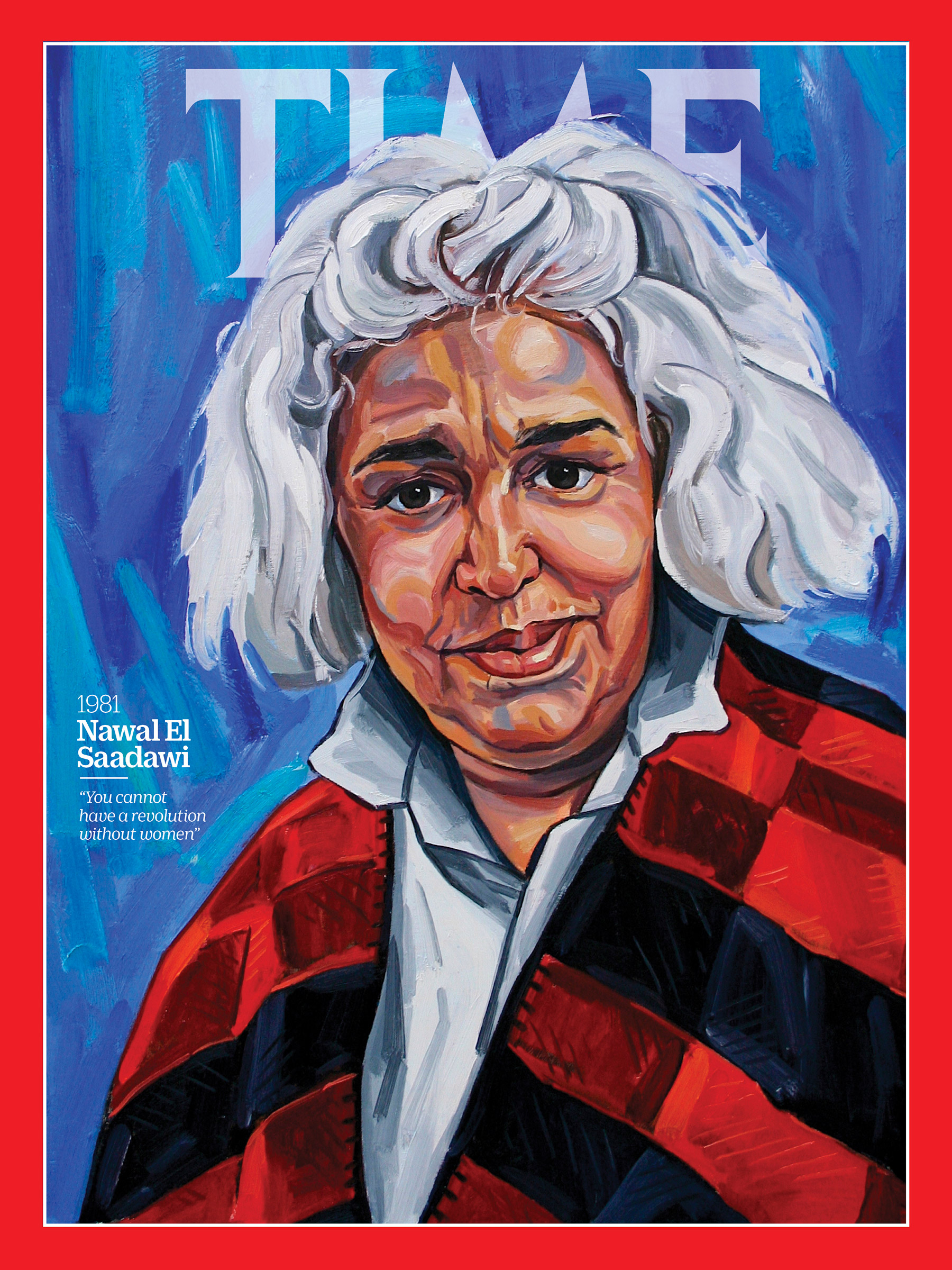Editor’s Note: FII’s #MoodOfTheMonth for November, 2021 is Popular Culture Narratives. We invite submissions on various aspects of pop culture, throughout this month. If you’d like to contribute, kindly email your articles to sukanya@feminisminindia.com
Nawal El Saadawi was an Egyptian feminist writer, activist and physician who bore witness to the innumerable presuppositions and strongly rooted myths about virginity, hymen, and the female body.
In her novel The Hidden Face Of Eve, she contextualises these myths on the basis of historical, political, and economic factors. By doing this, she strips them off their ostensible organic disguise and exposes their workings. She also talks about the interrelationships between popular religions like Judaism, Christianity, and Islam, and how they have perpetuated the cycle of popular myths in the world by partnering with imperialist and hegemonic forces as their allies.
Along with this, she attacks the popular western feminist discourse which appropriates the lived experiences of women in the so called “Third world”, opining that this appropriation of scholarship proves to be more harmful than helpful.

In the chapter titled, The Very Fine Membrane Called ‘Honour’, she expresses the danger that a woman faces if she does not have a hymen which conforms to societal beliefs, and extrapolates the consequences of along with an analysis of superstitions, orthodoxies, and rooted myths which could result in the end of the woman’s life her life owing to misunderstandings about the hymen.
The rituals and myths that a society inherits generation after generation have led us to believe that the hymen is an intact membrane which when torn should cause bleeding. She writes, “This fine membrane must be capable of bleeding profusely, of letting out red blood that can be seen as a visible stain on a white bed sheet the night a young girl is married.” The importance of hymen is so much that a woman’s as well as her family’s honour is directly related to it and this membrane is given more importance than a woman’s life itself.
Saadawi foregrounds the economic aspect of the myth with the role of the “daya” in Arab society. A daya is an old woman who has the job of carrying out the circumcision and tending to aspects of the defloration of girls on their wedding nights, as well as dealing with other issues around virginity. If we look closely at how the “daya” has become the agent of the popular myths then we can tease out the economic aspect of myths and why they become so popular. For the daya, the ritual ceremony is a matter of livelihood. The patriarchal society profits by both ideological and physical oppression. Linking a woman’s virginity to the honour of the whole family imposes the desired patriarchal setup needed to control the body of women.
In her book, she attacks the popular western feminist discourse which makes a homogeneous, monolithic entity of women in the “Third World” and categorises their oppression as antithetical to their lives. Saadawi rejects the idea that there are any fundamental differences between the situation of women in this hierarchy of division of worlds into first, second, and third
Historically, this desire to control the woman’s body is connected to the economic question of property and inheritance. To defend one’s control over property and to control the matters of inheritance, certain myths are looped around the woman’s body to restrict its access and freedom. Talking about moral values she says that, “Moral values are in fact the product of social systems or, more precisely, of the social systems imposed by the ruling class with the aim of serving certain economic and political interests, and ensuring that the situation from which that class draws benefit and power is maintained.”
Thus, as she explains, the underlying moral values which peddle myths around virginity, hymen, shame, and sexuality, is a tool by which power is exercised by the ruling class/ideology for its own needs and benefits. Myths around the female body are termed ahistorical and are emptied of any context. This is how the patriarchal system has ensured its smooth working by imposing an amnesia on the concepts purely based on construction in society.
Also read: Book Review: Woman At Point Zero By Nawal El Saadawi

That is why patriarchy has manufactured moral values and myths entirely conducive to its needs at every particular time. There is no biological or physiological justification for a set of moral values being imposed only on women. “A man’s honour is safe as long as the female members of his family keep their hymens intact.” The limitation of sexual license is more related to their power and having an upper hand rather than being anything intrinsically related to the honour of a woman with a mere physical membrane which may or may not exist.
Sexual desire of a woman is seen as a threat because it is powerful. To subjugate women, therefore, all sorts of constraints are inflicted upon her to render her paralysed and immovable within the oppressive system, for which popular myths partner with patriarchy and power to subjugate and link the various types of oppressions altogether.
Why Saadawi differs from other feminist scholarships in dispelling these popular myths is because she connects the practices of female circumcision, or the use of chastity belts, to economic forces. In the chapter Circumcision of Girls, she says, “In the final analysis we can safely say that female circumcision, the chastity belt, and other savage practices applied to women are basically the result of the economic interests that govern society. The continued existence of such practices in our society today signifies that these economic interests are still operative. The thousands of dayas, nurses, para-medical staff and doctors, who make money out of female circumcision, naturally resist any change in these values and practices which are a source of gain to them.”

Critique of the Western feminist discourse
In her book, she attacks the popular western feminist discourse which makes a homogeneous, monolithic entity of women in the “Third World” and categorises their oppression as antithetical to their lives. Saadawi rejects the idea that there are any fundamental differences between the situation of women in this hierarchy of division of worlds into first, second, and third.
In her Preface to the English edition of the book, she says, “They tend to depict our life as a continual submission to medieval systems, and point vehemently to some of the rituals and traditional practices such as female circumcision.” Saadawi clears her standpoint of being against female circumcision, but here she foregrounds that this induces a type of “superior humanity” in the Western feminist discourse, assuming a similar burden like that of the White man’s to emancipate women of the Arab world. This is an oversimplification and isolation of oppression and delinks it from the real social and economic aspects.
Chandra Talpady Mohanty also writes that the West treats women in the “Third World” as a homogeneous, monolithic entity oppressed by the same conditions as all other women. This kind of discourse creates a kind of collective amnesia of the factors working behind practices like female circumcision and connects it only to religion, and religion as the prime factor as being the cause of oppression.
One of the important links is that of imperialism and capitalism. In order to exploit the resources of the “Third World” the capitalistic endeavour of the West is given fodder by fundamentalism which makes exploitation easy for foreign forces. Therefore, Saadawi points out that the perpetuation of popular myths which oppress and dehumanise women are nurtured by international capitalism
She says, “I oppose all attempts to deal with such problems in isolation, or to sever their links with the general economic and social pressures to which women everyone are exposed..” She does not see oppression in terms of popular geological factors of the East and the West. She sees oppression as a result of an ongoing practice dating back to thousands of years, all over the world. In order to dispel the myths governing oppression, Saadawi considers it is very important to address the nexus of the political, economic, and social with the ideologies and discourses of oppression.

One of the important links is that of imperialism and capitalism. In order to exploit the resources of the “Third World” the capitalistic endeavour of the West is given fodder by fundamentalism which makes exploitation easy for foreign forces. Therefore, Saadawi points out that the perpetuation of popular myths which oppress and dehumanise women are nurtured by international capitalism. Talking about this link, she says that, “If this link is forgotten, feminist movements in the West may be used to further the cause of women’s liberation nut instead to participate in holding back the forces of freedom and progress in the countries of Asia, Africa, and Latin America.”
Also read: Women, Race & Class: Angela Davis And The Women’s Movement In India
She highlights how the Iranian revolution was hijacked by progressive feminist movements of the West who became the spokesperson of Iranian women, which was in turn harming the precepts of the Iranian revolution against American intervention itself.
Dispelling popular myths
Roland Barthes in his book Mythologies, comments on myths by stating that, “Every object in the world can pass from a closed, silent existence to an oral state, open to appropriation by society, for there is no law, whether natural or not, which forbids talking about things.” The logic of the myth is not governed by a single ahistorical law, rather, it is tentative to different situations in different contexts.
Myths are never organic by nature, and are always historically engineered. It is the society which gives life to a myth and wraps it under the guise or organic/natural/divine to make it non-contestable. Myths are deeply structured in an organised manner, and very prudently carry out their work in all aspects of society and individual lives.

Religion, language, and even education falls victim to the belief propagated by baseless myths. In a conversation about female circumcision that Saadawi had with a medical student about being in medicine and the rationale behind the benefits of cutting off the clitoris, the student replies, “ I have studied anatomy and medicine, yet I have never heard any of the professors who taught us explain that the clitoris has any function to fulfil in the body of a woman, neither have I read anything of the kind in the books which deal with the medical subjects I am studying.”
If we consider education as a way to dispel the vicious cycle of popular myths, then in this case even the education system is structured according to patriarchal myths revolving around hiding and concealing information which may disrupt the smooth workings of the patriarchal system.
It is important to understand the underlying structures and interconnections of myth to factors such as politics, economy, society, history, and patriarchal systems. It is only when we cease to see myths as rooted only in religion, and religion as springing from a divine source, that we can transcend the obdurate nature of myths in the society. There is a need to historicise and contextualise myths, and their garb as non-functional, and part of divine religion as well as a moral code of conduct.
Arifa Banu is currently doing her Masters in English Literature from Jawaharlal Nehru University. She has written several research papers on Postcolonialism, Feminism, and Indian Literature. Her research interests are South Asian Literature, Posthumanism, and Dalit Literature. You can find her on Instagram and Facebook





very glad you brought back Nawal and her ideas
We need to keep doing this in this environment where religious
differences are super imposed women /feminist solidarities